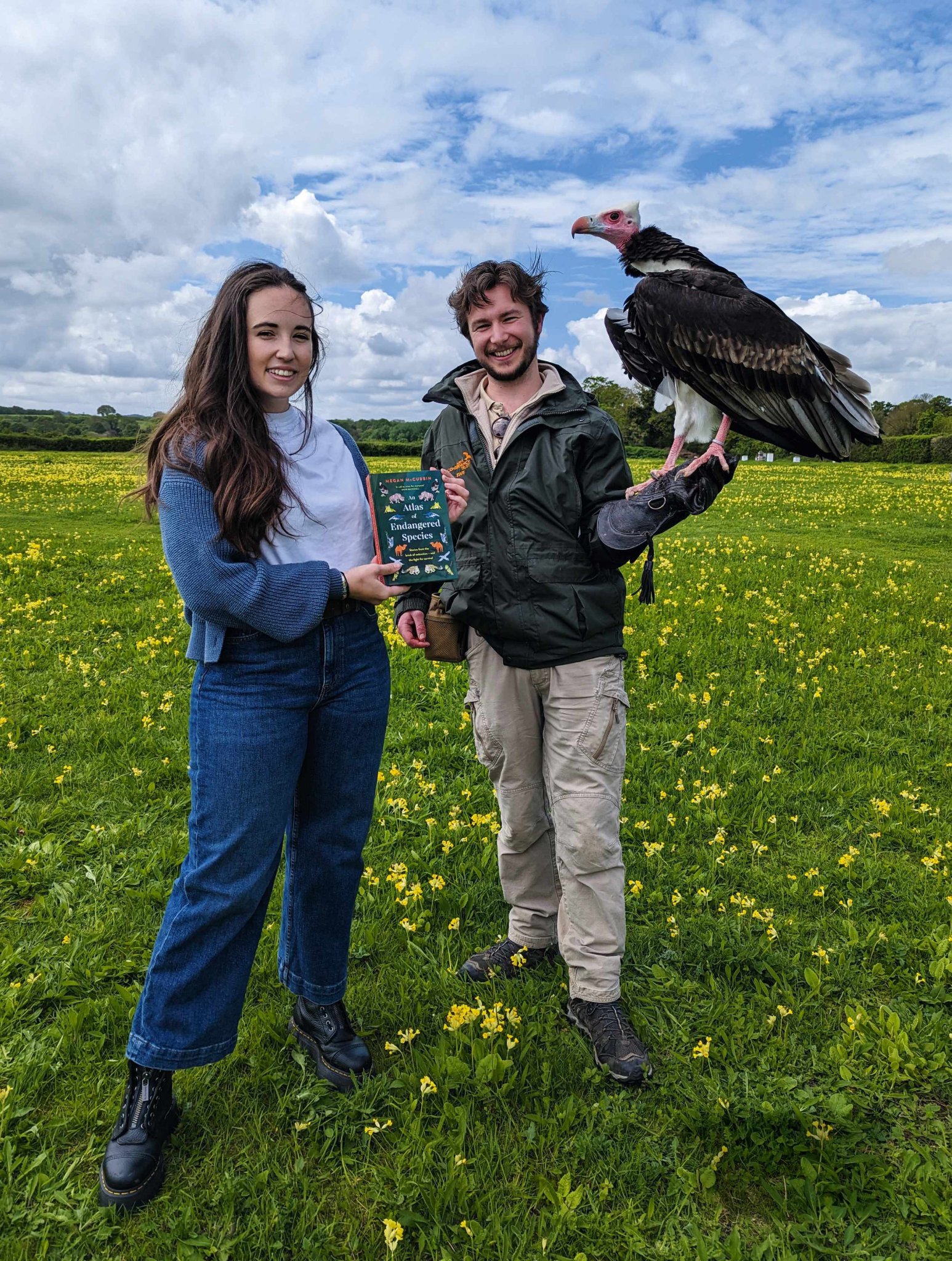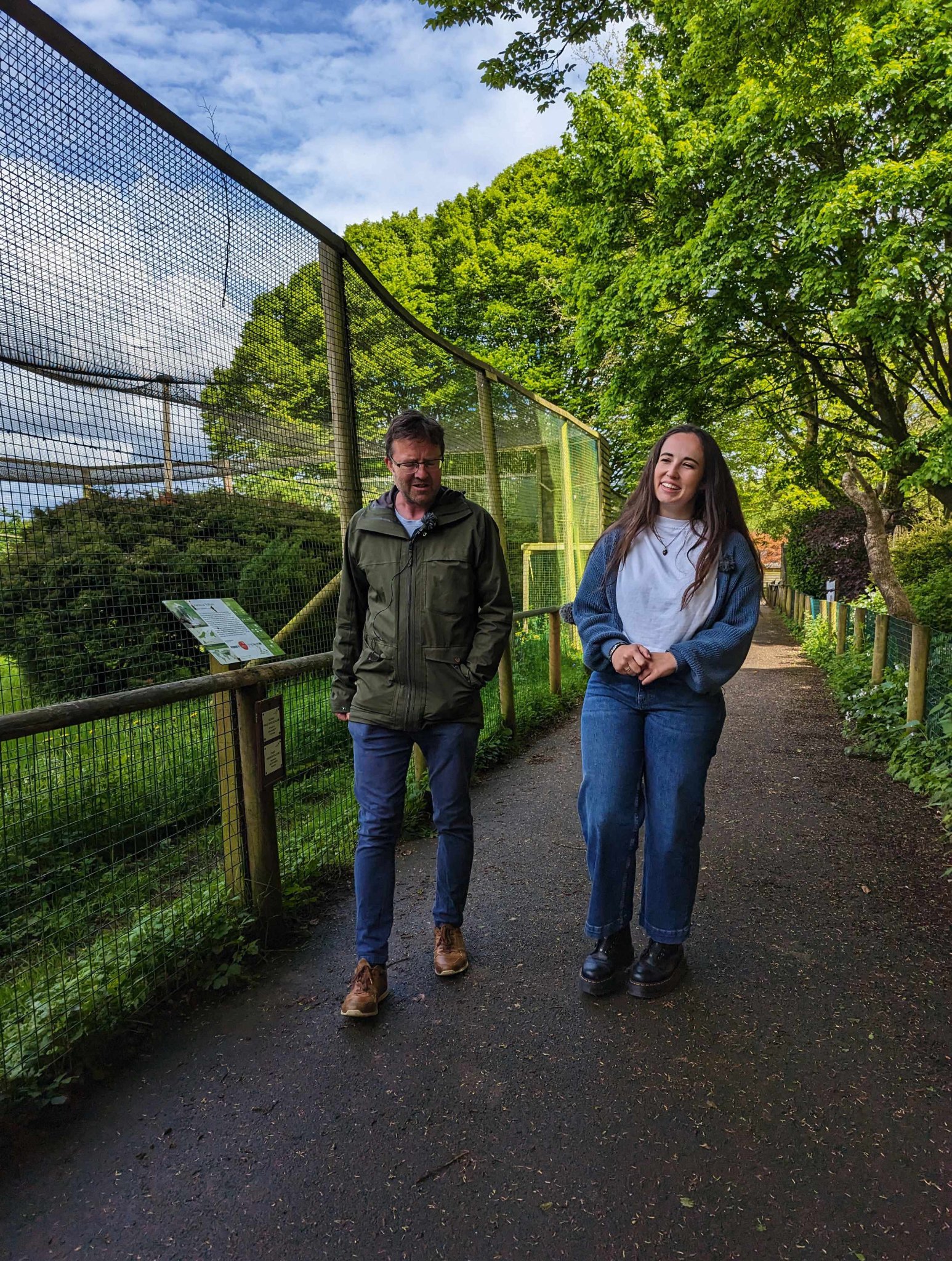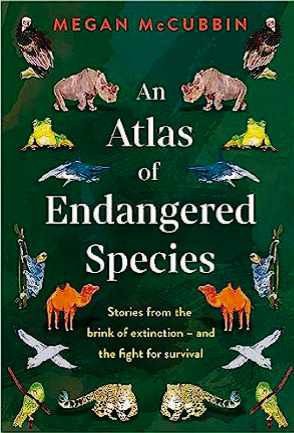
Finding hope in nature
It’s easy to get despondent about the natural world, but in her new book, Megan McCubbin explores stories of hope and courage for the world’s endangered species and reveals the best way we can all fight back
A scientist, naturalist, photographer, writer and TV presenter, Megan McCubbin is best known for appearing on Springwatch (and later Autumnwatch and Winterwatch) during the Covid pandemic with her step-father Chris Packham. Unable to explore the wider world during the first lockdown period of 2020, Megan and Chris brought a vital daily dose of wildlife joy and virtual escape into nature for millions during that strange spring.
As a scientist, Megan has travelled widely and studied and reported on wildlife and environmental issues from across the globe. Now, in her second book, she shares some of these extraordinary stories in An Atlas of Endangered Species.
BBC Countryfile Magazine editor Fergus Collins met up with Megan at one of her favourite local wildlife havens: the Hawk Conservancy Centre near Andover in Hampshire.
What’s so special about the Hawk Conservancy?
“I’ve been coming ever since I was a little girl. I’ve always been mesmerised by the birds that live here and the conservation work that’s done. On one of my first visits, there was a barn owl called Marmite, who was used as an educational bird who would be taken to schools to help teach the kids. I asked whether I could take Marmite to one of my school assemblies and fly him in front of all my school friends. They said yes and so I trained – I was only about five or six at the time – and learned how to ‘fly’ Marmite.
“On the assembly date, he flew off perfectly. But as he was on his way back to me, he just looked up, went to the beams at the top of the hall and didn’t come down for a good four or five hours! But I’ve been hooked on this place ever since.”
What is the book about?
“In my travelling and in my work, I have seen the declines of species firsthand. So I thought it was very poignant to talk about endangered species. The book is essentially an anthology of 19 species, plus humans at the end (not so endangered, but very critical in the storyline, of course). I’m highlighting the plight of a number of key threatened species around the world – and the incredible people and projects that are helping reverse the losses.
“I’m highlighting the plight of a number of key threatened species”
“Writing a book about endangered species is going to be tough. You’re talking about major species declines – but my job is to try to get these stories out there. We are talking seriously about losing some of the species in the book within my lifetime. But I had to find the hope and the people bringing the hope. And there is some amazing stuff being done. For example, there’s some really Jurassic Park-style science.
“Take the northern white rhinos, where the frozen embryos of a functionally extinct species are going to be raised through a zoo surrogacy programme with southern white rhino mothers. So we are going to potentially have northern white rhino calves running around again!
“It was more important to get the voices of these amazing people who are really on the front line, because for me, people are the hope.”
How are you feeling about the state of nature conservation in Britain?
“I’m feeling pretty frustrated, I suppose. Things aren’t necessarily moving as fast as they should be, especially within government and policy. But again, a lot of really great things are being done. We can look at Cairngorms Connect, we can look at the Knepp Estate and the rewilding that’s going on, we can look at the reintroduction, albeit slow reintroduction, of beavers… These are all steps in the right direction, but it is a slow process and we do need to kind of hit the accelerator on that.”

What can governments do?
“I always find law and policy so important. What I can’t wrap my head around is how inflexible it is, because ultimately law and policy are man-made things. And if we can’t update them and be more flexible with updated science, then what are we doing? Ultimately, science is telling us what we need to know about the climate and biodiversity. But we’re saying, ‘Oh, well, there’s a law in place and I know that we can’t possibly change that all.’
“We see our laws as set in stone, but we made them. We can change them if we want to and we can change it quickly. We saw how quickly the world changed during Covid. We do have the option to move fast when we want to.
“There was an IPCC report that said that we really do have to stop using fossil fuels and stop investing in fossil fuel infrastructure. But we are seemingly doing the opposite, despite science telling us differently. So we really need to flip that narrative, be more flexible with our ideas and our approach to things.”
What can people do individually?
“I’ve told people 100 times that you can make your garden more wildlife-friendly and it’s a brilliant thing to do. You know, sow seed, create a little wildflower pond, open up hedgehog highways. Of course, a pond doesn’t have to be big – just a sunken washing up bowl will do.
“But the most important thing that we can all do as individuals is use our voice to talk about the issues that we care about, communicate with one another, and ultimately ask for the change that we want to see.
“Being angry and upset are not the nicest emotions, obviously. We don’t want to be angry and upset, but they are actually very valuable emotions because they can be powerful motivators when used in the right way. When you are using your voice peacefully and democratically to ask for change and to hold those responsible for environmental damage to account, then actually anger can be a really important thing. So don’t be afraid of getting angry. Use it to your advantage, turn it around and make something proactive and productive out of it.
“But think about your own actions too, every time you have a decision to make. What are you going to do? Are you going to make the world a better place or are you going to continue as normal and carry on around the same structure?”
Do you have a place where you go to find peace and joy in nature?
“I find patches of that everywhere. I think for me, because I have always moved around a lot, even when I was younger, I can find the patches of wild wherever I am and get great joy from that.
“The other day, I had to be somewhere urgently but I ended up being late because a beautiful blackbird started singing and I just stopped and listened because I couldn’t move. I was almost paralysed by how beautiful its song was. I didn’t want to go anywhere. That was my wild world for the day.”
What advice do you have for young people who would like to follow the path you have?
“The first thing is: be kind to yourself. It’s a really hard time for young people at the moment, especially going through exams and having to think about what you want to do in the current world. So don’t be too hard on yourself. And remember the exams are important, but there is also a lot more to life. Remember to get practical experience. I was volunteering as much as I could when I was younger to get hands-on experience and to figure out what I wanted to do. So yes, study hard but explore, too.
“I’m actually not very academic in the conventional sense. I was diagnosed with dyslexia when I was seven and that was a real struggle at school. I didn’t understand why I didn’t learn in the same way that everybody else did. It was just came to others a lot easier than it hit me. People would leave the exam room and I would be left thinking, ‘Why am I still sat here? Why am I different?’
“It took me a long time. I had a brilliant dyslexic support teacher, Phil, who taught me the skills that I really needed. It wasn’t so much that I didn’t fit the school system, rather it was that the school system didn’t fit me. So I had to relearn the skills to go and teach myself science and maths outside of school, so that I could learn how I learn best. Because the school system is great for a lot of people, but it’s not very good for neurodivergent people.
“In fact, thinking differently is a brilliant thing, and we need divergent thinkers, neurodivergent thinkers, to give a whole variety of ideas. When I wrote the book, I wrote it with dyslexic thinkers in mind. It has been designed for dyslexic readers in terms of its font and its formatting.
“So I hope for anybody, no matter who you are, who is not obviously dyslexic, you won’t notice it. But for dyslexic readers, I hope that when they come to it, it’s a lot easier and more interesting.”
BBC Countryfile Magazine Plodcast
You can listen to the Plodcast episode with Megan (episode 198) on Spotify, Apple Podcasts and all good pod providers

Megan McCubbin’s new book is An Atlas of Endangered Species, published by Two Roads (£20).